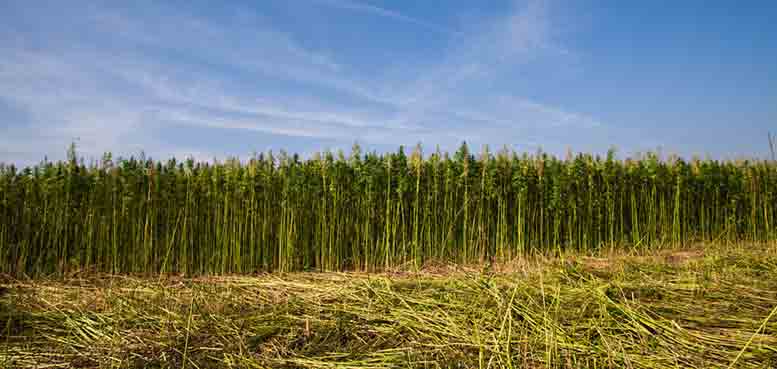Hemp grown to clean up polluted soil could be used for hempcrete construction and to produce energy, with virtually no health risks, an Italian researcher has suggested.
Vito Gallo, Professor of Chemistry at the Polytechnic of Bari, said the hemp plant’s performance in the phyto-remediation (phyto-purification) process leaves only trace amounts of any pollutants behind.
“Hemp allows a sort of dilution of metals in the biomass and this results in material that, in principle, presents very limited or even no health risks,” Gallo, who is also coordinator of BIO SP.HE.RE., a hemp-specific research initiative, told Canapa Industriale.
Gallo suggested that scientific organizations could get together to set acceptable levels of concentration of any foreign substances in downstream hemp products.
Robust research
Italian stakeholders are working on significant research regarding phyto-remediation, in which specific plants are grown both to clean up pollutants such as heavy metals, and to stimulate the degradation of organic compounds to enrich the soil. Hemp has proven itself to be highly effective in both roles, as Italian scientists have set out to further document.
The question has always been what would be done with the adulterated hemp once it’s harvested from polluted fields.
Italian researchers have posited that most of the heavy metals absorbed by hemp are stored in the roots and leaves of the plant, leaving only miniscule amounts in the hemp stalk, and continue to study that process.
Hemp and soil
The research in Italy builds on studies from as far back as 2002, when researchers from the University of Wuppertal and the Faserinstitut of Bremen, Germany, showed that hemp plants sown for remediation collected most heavy metals in the leaves, while plant stalks were virtually unaffected by contamination. A later study in India in 2014 identified hemp as a promising tool for the hyperaccumulation of heavy metals such as arsenic, lead, mercury, copper, chromium and nickel. Further studies since then have underpinned both analyses.
In addition to using the hemp stalks for hempcrete, hemp biomass can be burned for energy. With the ashes collected under controlled conditions, the metals can be extracted and re-used, Gallo said.
Sustainable new system
“The use of hemp for phyto-remediation would not only lead to the creation of a new system of land use linked to environmental protection, but also to the creation of jobs and sustainable resources for the community, according to the principles of the green economy and bio-economy,” said Marcello Colao, a biologist at the Italian non-profit Association of Apulian Environmental Biologists (ABAP), which is also studying phyto-remediation.
Colao is directing the GREEN project (Generate Resources And New Economies), which is studying different varieties of hemp and ranking them for their phyto-remediation capacity. That research, in partnership with the region of Puglia government, is part of a broader initiative that is researching hemp for its potential in sustainable development and carbon sequestration, and developing strategies for improved agricultural management practices.
Also supported by the Puglia government, BIO SP.HE.RE, the project under Gallo’s direction, is studying a mixture of micro-algae and hemp to see how it can enhance the phyto-purification of both water and soil. The researchers have reported that lab analysis showed the mix facilitated growth of hemp plants in polluted soil, thereby speeding up the phyto-remediation process; hemp plants were particularly effective at absorbing cadmium, nickel and zinc, the team said.

